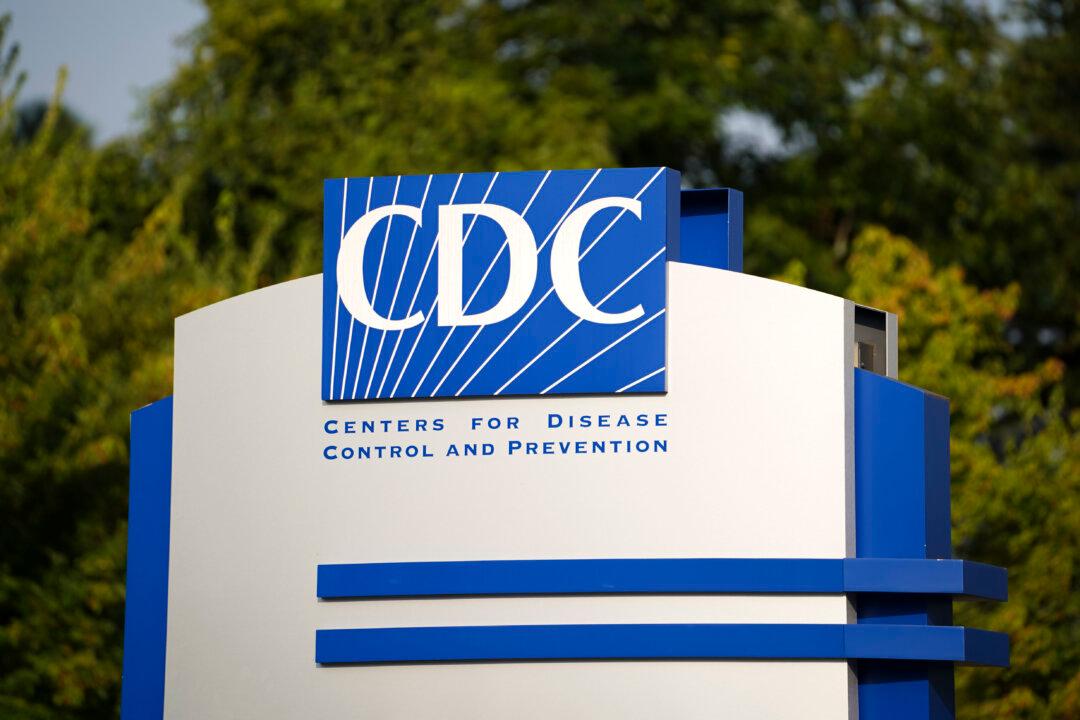Six medical journals rejected a key paper on COVID-19 vaccines and heart inflammation, a condition the vaccines cause, according to documents reviewed by The Epoch Times.
CDC officials falsely told the paper’s authors that the paper did not add anything to a previously published CDC report, which estimated more COVID-19 hospitalizations would be prevented than cases of heart inflammation, or myocarditis, caused.
“I ran this by the MMWR lead editorial staff members; they felt that while the report was interesting, they did not feel that there was anything that was not already relayed,” Dr. Jacqueline Gindler, one of the officials, said in an Aug. 10, 2021, email.
The new paper clarified the risk-benefit calculus by separating children without serious underlying conditions such as obesity from children with one or more of the problems. It broke down the age group into two parts, 12- to 15 and 16- to 17. And it subtracted incidental hospitalizations, or hospitalizations where people test positive for COVID-19 but are actually being treated for other conditions.
The researchers estimated, using similar methods as the CDC, that one million doses would cause more cardiac adverse events in healthy boys than COVID-19 hospitalizations prevented. Among boys aged 12 to 15 without comorbidities, they calculated up to 6.1 times more adverse events among the vaccinated.
Both the CDC and the new paper utilized reports to the Vaccine Adverse Event Reporting System (VAERS), which the CDC co-manages.
Dr. Tracy Beth Hoeg, one of the paper’s co-authors, said that the CDC’s position that the paper did not add anything “was laughable.”
“What we added was stratification for non high-risk vs high-risk children, which was new,” Dr. Hoeg told The Epoch Times in an email. “We also reported a higher rate in 12-17 year olds than CDC had been reporting in males after dose two. Finally we removed incidental COVID-19 hospitalizations, when estimating potential vaccine benefits, which CDC had not been doing up to that point.”
Benjamin Hayes, a CDC spokesman who answered a query sent to Dr. Gindler, told The Epoch Times in an email that MMWR had to be “highly selective” due to receiving many submissions during the pandemic.
Other Rejections
Five other journals also rejected the paper, which was crafted after the CDC finally acknowledged vaccines likely cause myocarditis.“Your paper was evaluated by four external reviewers and a statistical consultant and was discussed among the editors,” John Jarcho, the journal’s deputy editor, informed the paper’s authors. “Although it is interesting, I am sorry to say it was not accepted for publication. This was an editorial decision and reflects an assessment of the merits of your manuscript as compared with the many others we receive.”
The statistical reviewer did convey helpful feedback that resulted in adjustments to the paper, authors said.
Dr. Elizabeth Loder, a British Medical Journal editor, later rejected the paper, offering a similar rationale as the CDC.
“In comparison with the many other papers we have to consider, this one is a lower priority for us. I’ve reviewed the paper along with another senior editor, and we do not have confidence in the comparison you make in the paper,” Dr. Loder said. “The raised risk of myocarditis has been noted before based on this database and the novelty is in the comparison. That calculation will depend on the prevalence of COVID at the time and it was low in May/June 2021.”
A spokesperson for the journal told The Epoch Times in an email: “We are unable to comment in detail about a specific paper, as this is a confidential matter. However, we can say that in general, papers are considered on matters of methodology, potential importance, interest to our broad readership, and on what they add to the established literature. Every paper is thoroughly assessed to ensure that any claims made are supported by robust methods and definitive conclusions before a decision is made.”
Dr. Brahmajee Nallamothu, editor-in-chief of Circulation: Cardiovascular Quality and Outcomes, told the authors that he shared their paper with several editors and experts.
“Many of us appreciated you tackling this critical topic, and lending your analytical skills as well as important voices to this debate. However, at the end of the day our concerns were really around the substantial uncertainty of calculating incident estimates using VAERS,” he wrote.
Two American Medical Association journals also turned down the paper. One said it was better for a pediatric journal.
Preprint
The authors were surprised by all the rejections.“It was really the first time in my life that I was getting this sense the journals were afraid of taking a chance on publishing something,” Dr. Hoeg said. “This was particularly frustrating, not because of my own academic career, but because the consequences of them choosing not to publish our findings were adolescents and their families would not be fully informed about the risks of myocarditis from the Pfizer vaccine.”
Dr. John Mandrola, a cardiac electrophysiologist based in Kentucky and another co-author, said it was unusual but not unheard of to be rejected by so many journals.
“We were responsible, careful, cautious, and tried six times to get peer-reviewed and published before going public,” Allison Krug, an epidemiologist who co-authored the paper, told The Epoch Times via email. “As it turned out, no peer reviewer found any methodological issues and in the end, word got out we were ’rejected multiple times’ before we published our preprint. This made it look like we published garbage to those who wished to think that way.”
“The CDC explicitly states that VAERS cannot be used in isolation to infer the existence, frequency, or rates of vaccine complications,” one critic, University of Oxford professor Trish Greenhalgh, told the British Medical Journal.
Peer Review
That wasn’t true. The paper was published by the European Journal of Clinical Investigation in February 2022.The peer-reviewed version made clear the post-vaccination myocarditis rates calculated by the authors were actually an undercount.
The studies showed “we underestimated the rates, as we guessed we would,” Ms. Krug said. “We were more than vindicated.”
“Clearly our findings withstood the test of time and journals not publishing our paper only delayed getting important vaccine safety information to the public,” Dr. Hoeg said.
One strength of the paper was that each VAERS report was analyzed by Dr. Mandrola. He verified cases had chest pain symptoms as well as at least one other criterion, such as an abnormal electrocardiogram or elevated troponin levels.
“We took a lot of criticism because VAERS is an imperfect observational method of finding potential complications from the vaccine. And it is absolutely true that VAERS is imperfect. However, the thing that struck me is that was that this wasn’t just random people writing in VAERS reports about their headache or fatigue or malaise or whatever, these were caregivers who were seeing patients who complained of a symptom and were being seen in a healthcare setting. And the caregiver was filling out the VAERS report,” Dr. Mandrola told The Epoch Times.
“And this was extra paperwork that they were doing that they didn’t have to do. To me, it seemed important to report these largely objective findings,” he added.
Dr. Mandrola was concerned about the post-vaccination cases because he knows that in some myocarditis cases, heart inflammation leads to scarring, which never goes away. Ms. Krug and Dr. Hoeg, meanwhile, were motivated to craft an accurate risk-benefit calculation because they have sons in the age group that faces the highest risk of post-vaccination myocarditis. Dr. Hoeg was also well-acquainted with the heart inflammation.
“Being both an epidemiologist and sports medicine physician I am well aware of the long term risks scarring from classical myocarditis can pose for sudden cardiac death in athletes down the road,” she said.
The CDC to this day has continued to lump in children without a comorbidity with those who do in its risk-benefit calculations. It does not stratify by previous infection. And it has largely ignored the international data.
“They continue to refuse to use better international data for their estimates of post-vaccination myocarditis rates and acknowledge the limitations of their data on vaccination benefits in low risk and especially previously infected adolescents,” Dr. Hoeg said. “So their position was incorrect then and has certainly not become more reliable with time.”







